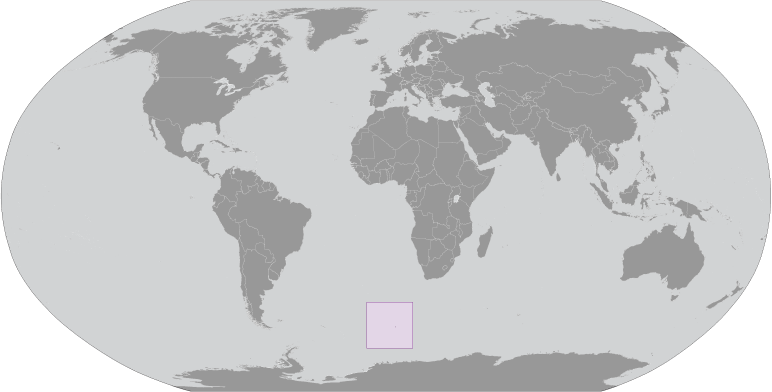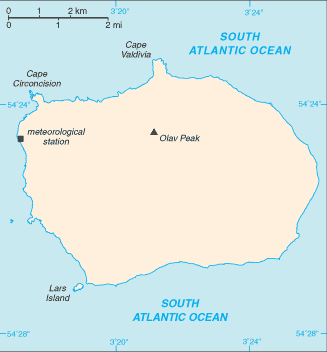


Antarctica ::
Bouvet Island
-
Introduction :: Bouvet Island
-
Background:This uninhabited, volcanic, Antarctic island is almost entirely covered by glaciers making it difficult to approach; it is recognized as the most remote island on Earth. (It is furthest in distance from any other point of land, 1,639 km from Antarctica.) Bouvet Island was discovered in 1739 by a French naval officer after whom it is named. No claim was made until 1825, when the British flag was raised. A few expeditions visited the island in the late 19th century. In 1929, the UK waived its claim in favor of Norway, which had occupied the island two years previously. In 1971, Norway designated Bouvet Island and the adjacent territorial waters a nature reserve. Since 1977, Norway has run an automated meteorological station and studied foraging strategies and distribution of fur seals and penguins on the island. In February 2006, an earthquake weakened the station's foundation causing it to be blown out to sea in a winter storm. Norway erected a new research station in 2014 that can hold six people for periods of two to four months.
-
Geography :: Bouvet Island
-
Location:island in the South Atlantic Ocean, southwest of the Cape of Good Hope (South Africa)Geographic coordinates:54 26 S, 3 24 EMap references:Antarctic RegionArea:total: 49 sq kmland: 49 sq kmwater: 0 sq kmcountry comparison to the world: 233Area - comparative:about 0.3 times the size of Washington, DCLand boundaries:0 kmCoastline:29.6 kmMaritime claims:territorial sea: 4 nmClimate:antarcticTerrain:volcanic; coast is mostly inaccessibleElevation:lowest point: South Atlantic Ocean 0 mhighest point: Olavtoppen (Olav Peak) 780 mNatural resources:noneLand use:agricultural land: 0% (2011 est.)arable land: 0% (2011 est.) / permanent crops: 0% (2011 est.) / permanent pasture: 0% (2011 est.)forest: 0% (2011 est.)other: 100% (2011 est.)Natural hazards:occasional volcanism, rock slides; harsh climate, surrounded by pack ice in winterEnvironment - current issues:none; almost entirely ice coveredGeography - note:almost entirely covered by glacial ice (93%); declared a nature reserve by Norway; the distance from Bouvet Island to Norway is 12,776 km, which is almost one-third the circumference of the earth
-
People and Society :: Bouvet Island
-
Population:uninhabited
-
Government :: Bouvet Island
-
Country name:conventional long form: noneconventional short form: Bouvet Islandetymology: named after the French naval officer Jean-Baptiste Charles BOUVET who discovered the island in 1739
note: pronounced boo-vay i-land
Dependency status:territory of Norway; administered by the Polar Department of the Ministry of Justice and Oslo PoliceLegal system:the laws of Norway apply where applicableFlag description:the flag of Norway is used -
Economy :: Bouvet Island
-
Economy - overview:no economic activity; declared a nature reserve
-
Communications :: Bouvet Island
-
Internet country code:.bvCommunications - note:has an automated meteorological station
-
Military and Security :: Bouvet Island
-
Military - note:defense is the responsibility of Norway
-
Transportation :: Bouvet Island
-
Roadways:Ports and terminals:none; offshore anchorage only
-
Transnational Issues :: Bouvet Island
-
Disputes - international:
none